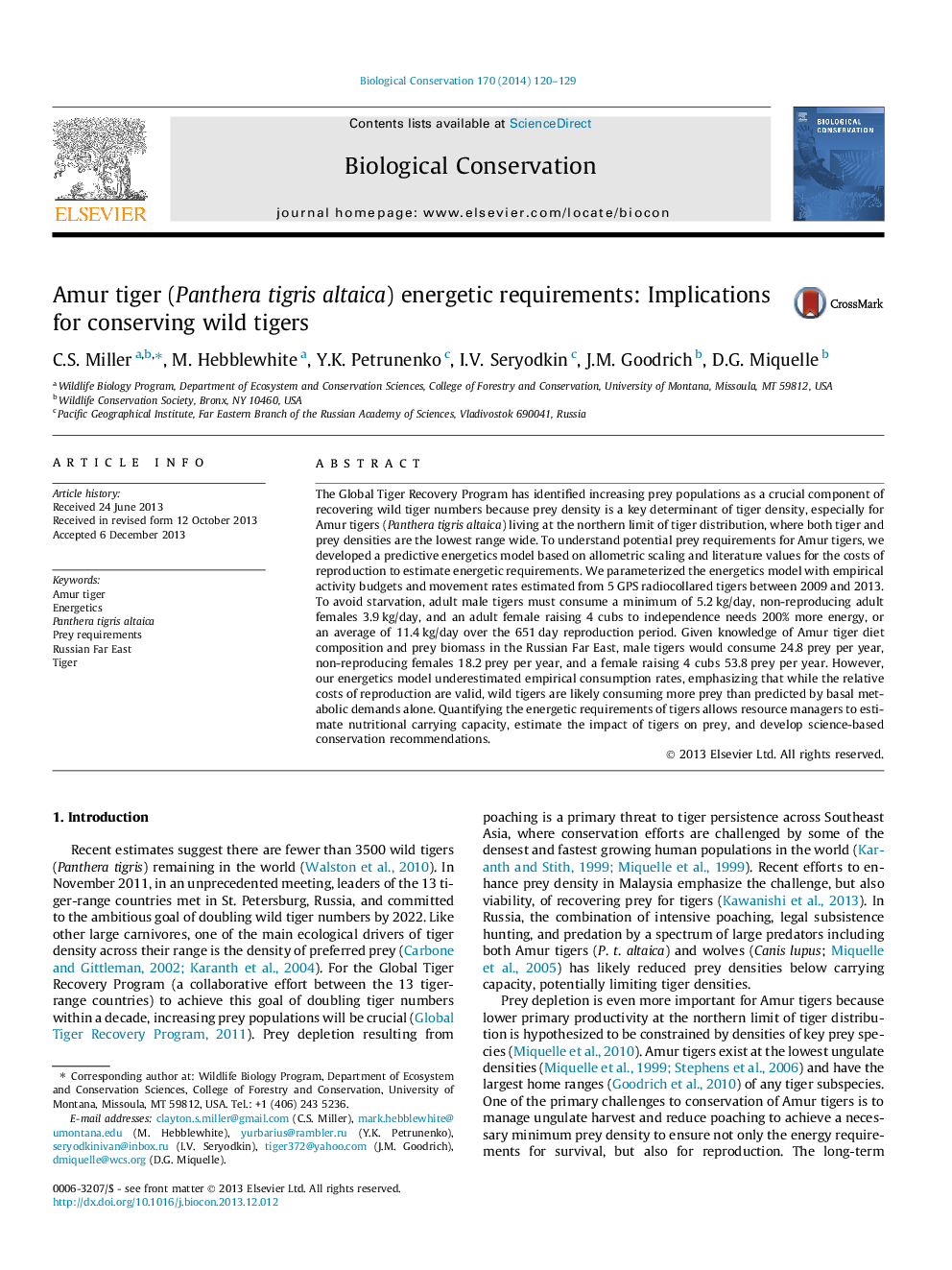| Article ID | Journal | Published Year | Pages | File Type |
|---|---|---|---|---|
| 6300144 | Biological Conservation | 2014 | 10 Pages |
Abstract
The Global Tiger Recovery Program has identified increasing prey populations as a crucial component of recovering wild tiger numbers because prey density is a key determinant of tiger density, especially for Amur tigers (Panthera tigris altaica) living at the northern limit of tiger distribution, where both tiger and prey densities are the lowest range wide. To understand potential prey requirements for Amur tigers, we developed a predictive energetics model based on allometric scaling and literature values for the costs of reproduction to estimate energetic requirements. We parameterized the energetics model with empirical activity budgets and movement rates estimated from 5Â GPS radiocollared tigers between 2009 and 2013. To avoid starvation, adult male tigers must consume a minimum of 5.2Â kg/day, non-reproducing adult females 3.9Â kg/day, and an adult female raising 4 cubs to independence needs 200% more energy, or an average of 11.4Â kg/day over the 651Â day reproduction period. Given knowledge of Amur tiger diet composition and prey biomass in the Russian Far East, male tigers would consume 24.8Â prey per year, non-reproducing females 18.2Â prey per year, and a female raising 4 cubs 53.8Â prey per year. However, our energetics model underestimated empirical consumption rates, emphasizing that while the relative costs of reproduction are valid, wild tigers are likely consuming more prey than predicted by basal metabolic demands alone. Quantifying the energetic requirements of tigers allows resource managers to estimate nutritional carrying capacity, estimate the impact of tigers on prey, and develop science-based conservation recommendations.
Related Topics
Life Sciences
Agricultural and Biological Sciences
Ecology, Evolution, Behavior and Systematics
Authors
C.S. Miller, M. Hebblewhite, Y.K. Petrunenko, I.V. Seryodkin, J.M. Goodrich, D.G. Miquelle,
